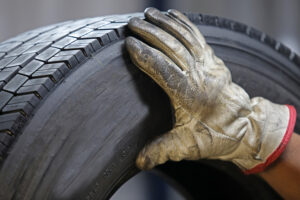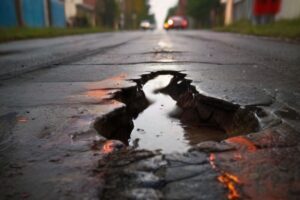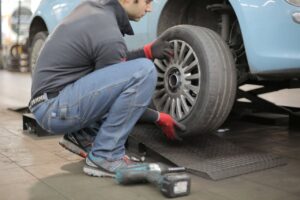How To Identify A Puncture
At some time or another in our lives, we have all experienced a puncture or two, be it from driving over a rouge nail, or a sharp stone. But do you know how to correctly repair a puncture? Usually, the safest option is to always take it to a professional or nearest garage and replace the damaged tyre. However, there are several signs to look out for if you believe you may have a puncture but your tyre is not flat yet. In this article, we are going to be covering a few top tips on how puncture repairs are carried out and what to look out for when you suspect your tyre has a puncture.
How do I know if I have a tyre puncture?
There are several signs that you may notice if you think your tyre may have a puncture. These include:
- Steering may become difficult. This is likely due to the tyre slowly deflating after sustaining a slow puncture, and therefore unable to perform properly.
- The car may feel wobbly or shuddery when driving
- Depending on what side the puncture is, the car will pull either to the left or right side when driving
- You may hear a ticking sound if the tyre has a nail or screw in it. This is when the nail makes contact with the road as the tyre rotates
Even if you don’t suspect a puncture necessarily, it is important to regularly check your tyres as slow punctures can take a while to detect.
Are puncture repairs safe?
In order to repair a puncture, there are certain recommendations set by the British Standard BS AU 159 that need to be adhered to. To meet these recommendations and adhere to the safety guidelines, we will only repair a puncture sustained in the ‘minor repair area.’ This is the central ¾ of the tyre. If the puncture is outside of this area, it cannot be repaired as it is too close to the sidewall. Additionally, if the puncture is 6mm or bigger, it is irreparable and will need a full tyre replacement.
Is my puncture repairable?
Unfortunately, not all punctures are repairable. In the interest of safety laid out by the BS AU 159 Nation Tyres and Autocare, tyres must not be repaired but instead replaced if it exhibits any of the following:
- Tread depth is below the legal limit
- Damage to the casing has occurred – this is the internal structure of the tyre
- A significant solvent contamination
- Damage to the bead of the tyre
- Splits, cuts and bulges in the tyre
- Cords exposed from tread wear or sidewall damage
It is important to get any puncture professionally checked, especially if you are sure of the severity of the damage.




